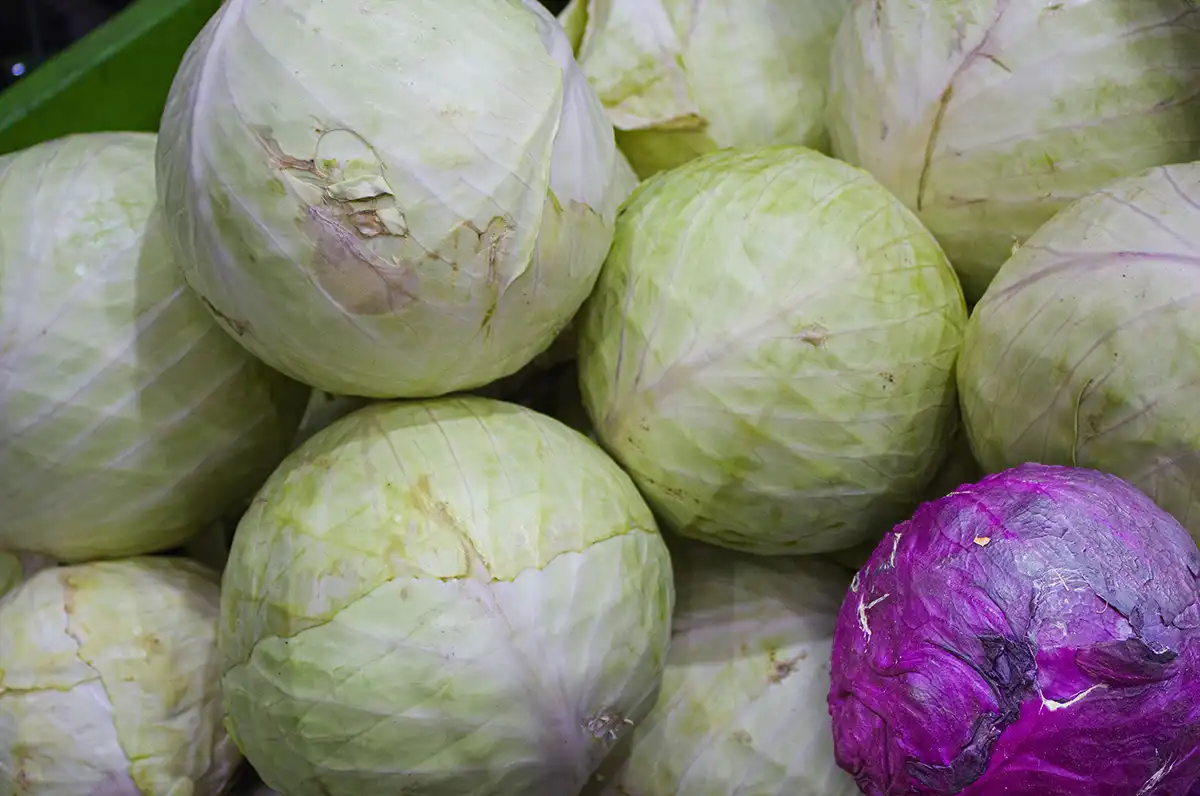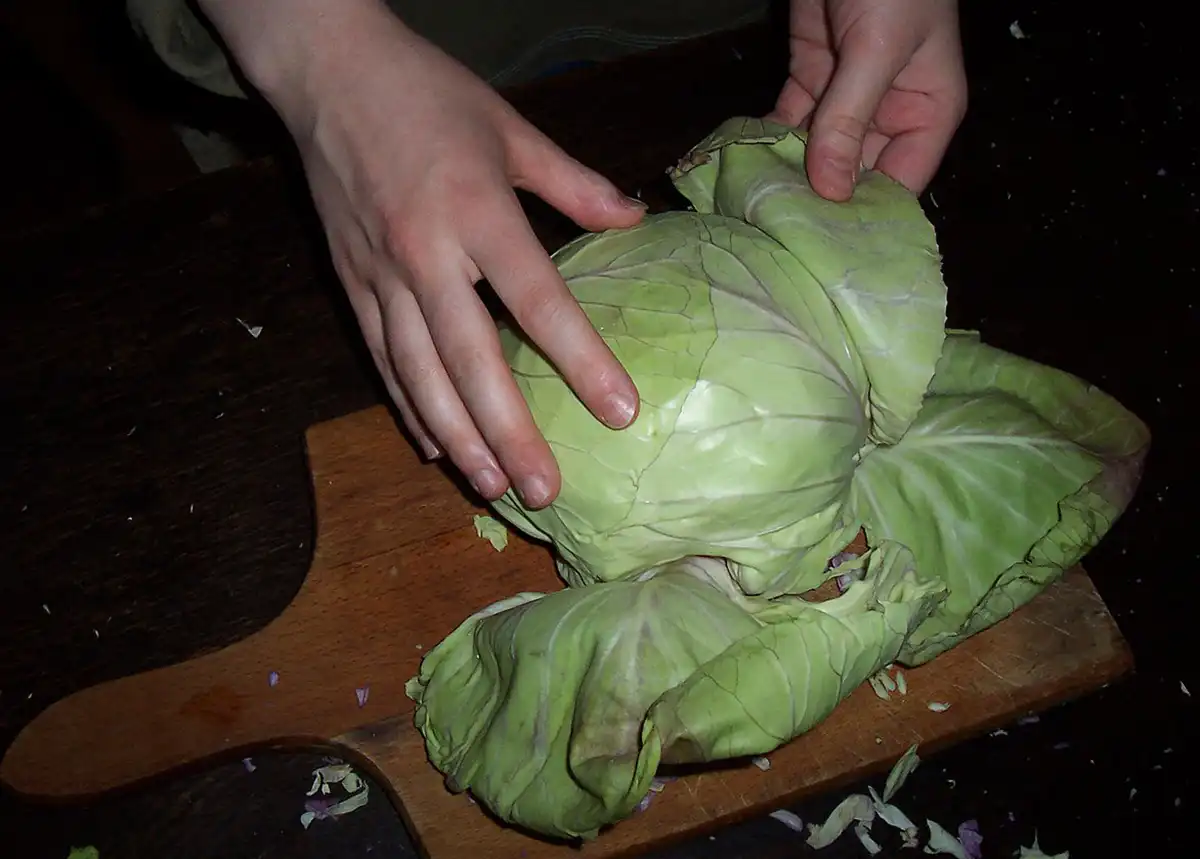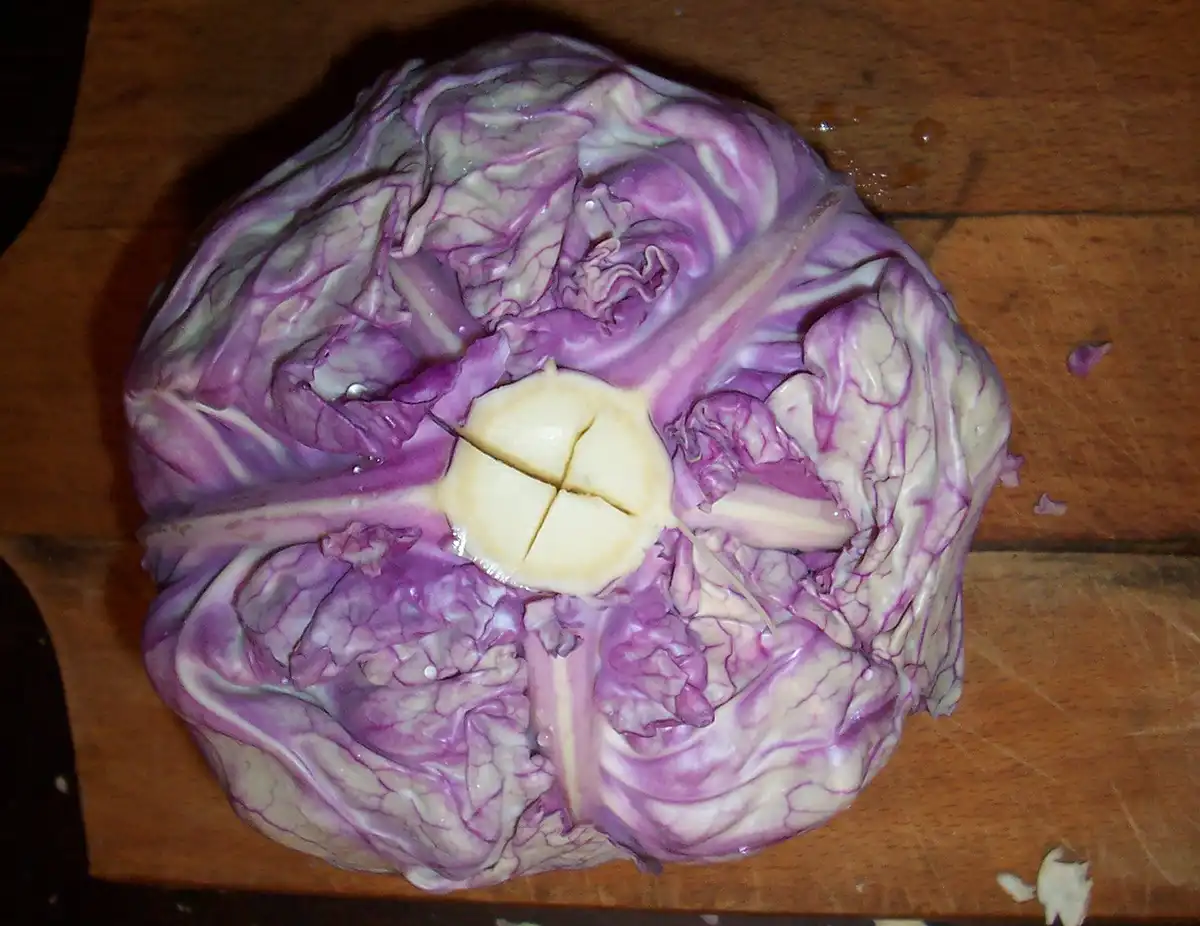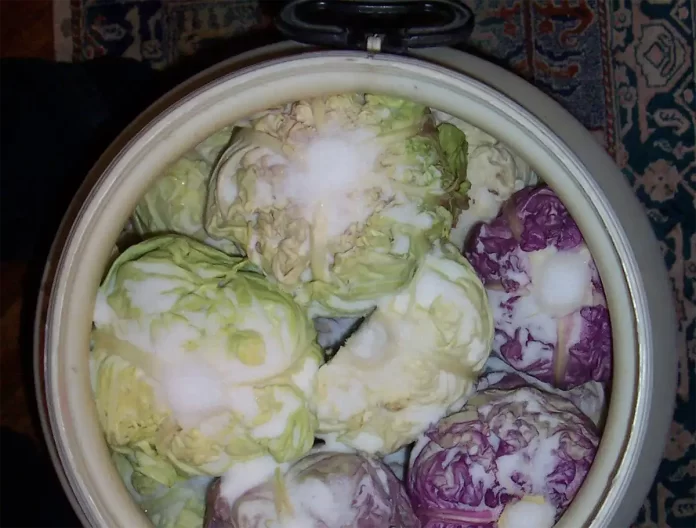How To Make Homemade Sauerkraut? Preparing sauerkraut in a can for the winter is not only a traditional practice in some countries, but also very useful. Here are a few reasons why it is good to make your own sauerkraut for the winter, instead of buying ready-made ones from the stores.
Homemade Sauerkraut benefits
- Improves the immune system – Sauerkraut contains vitamin C, which supports the immune system and helps the body fight infections and diseases, especially in winter.
- Preserves Nutrients – The fermentation process used to make sauerkraut helps preserve the nutritional value of the cabbage. When you make sauerkraut in a can, it remains rich in vitamins, minerals and enzymes that are good for health.
- Improves the work of the liver – homemade sauerkraut is rich in probiotic microorganisms that are beneficial for the health of the liver, helping to cleanse it of toxins and aiding the absorption of nutrients.
- Supports gut flora – Probiotic microorganisms in sauerkraut have been linked to improved gut flora. They can help with problems such as excess gas, stomach upset and constipation.
All of these factors make homemade canned sauerkraut a great addition to your winter menu and healthy lifestyle. Not only will you enjoy its taste, but it will also help you maintain good health during the cold months. Besides, where would we be without sarmi sarmi for Christmas or a unique bite of chopped sour cele with black pepper.
Homemade Sauerkraut recipe with sea salt

Things are a bit relative here, since if we assume that the cabbage is 50 kg, after we clean it of the outer leaves, it will certainly yield several kilograms of fiber. A 120-liter can is generally sufficient for this quantity, but if you want a large one, use a 100-liter can. In general, the proportions are as follows:
Amounts of cabbage and salt for 1 large can of 120 l.
- 50 kg. cabbage (shredded);
- 1 purple cabbage (for color);
- 2 kg. salt;
- water.
How to make homemade sauerkraut in a can

We clean the cabbage from the outer leaves and from the cob if it is too big. We make a cross with a knife in the place where the cob is, measuring about 7 by 7 cm.

We arrange the cabbage in a suitable can, and at the bottom of the can we necessarily put a wooden or plastic grate.
We press the cabbage into the can so that it fits well, gradually adding layers until we are four fingers from the top level. We also put the red cabbage, which is only for color (of course, this is optional).

Then we dissolve the coarse sea salt in water in a ratio of 20-30g of salt per liter and pour the cabbage with it. We press down the upper cabbages with something heavy (if you don’t have anything at hand, one or two 2L PVC bottles filled with water do a great job). Finally, we cover the can with the lid, but do not close it tightly. Your canned sauerkraut needs to be able to breathe.
You need to strain the cabbage every day. You drain several buckets of the brine until the liquid is completely exchanged.
You will know when it is ready, it should be soft to the touch, but not cheesy, but to taste – just try it. If it’s close to what you like homemade sauerkraut to taste like, then it’s done.
Quick fermentation of sauerkraut in a can with this trick
To speed up the process of fermentation, you can add a little whey. To start the fermentation sooner and if you don’t have to wait long, add yogurt whey to the brine. If you’re wondering where to get it, just collect the liquid from the surface of the yogurt. It contains beneficial bacteria and the fermentation processes will be accelerated significantly.
Tip: something very important for this winter, when the cabbage is ready, to cut it and stop the fermentation, dissolve sodium benzoate (bought from the pharmacy) in a bucket of drained brine from the sauerkraut, mix well and return it to the can.
Bon Appetit!
You already know how to make homemade sauerkraut in a can, but if this method is not to your liking due to the dimensions of the can, overflowing, etc. check out this recipe for sauerkraut in a jar.
If you are in doubt about the amount of salt per liter of water, see the exact proportions in this article: How much salt is added per liter of water for sauerkraut.
And also don’t overdo with salt and monitor your blood pressure.
